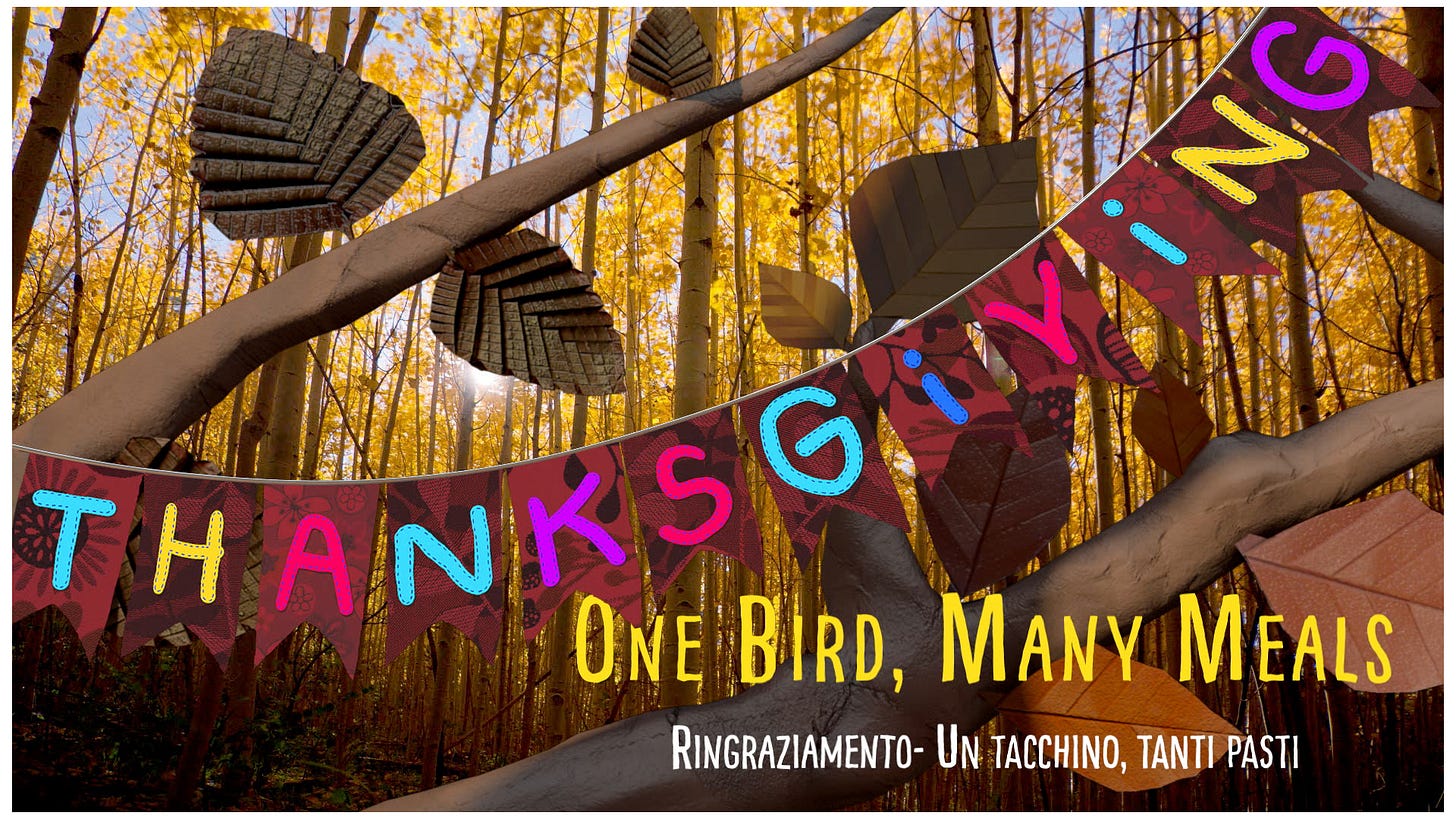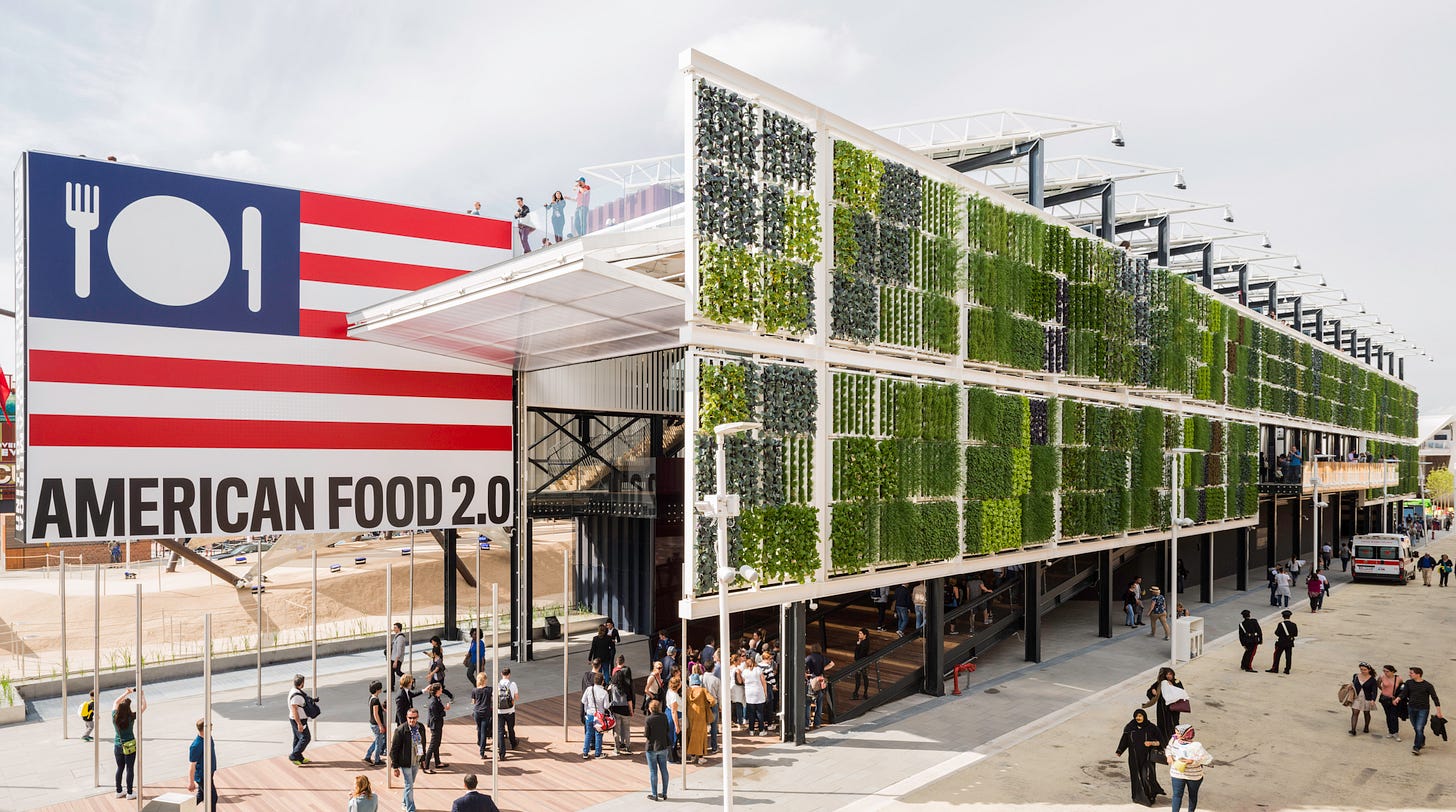Side(s)lining Thanksgiving Creativity
Brussels Sprouts with Bacon, I Can Mashed Potato, a Few Thoughts about Holiday Innovations, and Thanksgiving on a World Stage
Welcome to Issue #26. That’s half a year of weekly newsletters. Hard to believe. Now we have not one, but two food-centric holidays just around the corner: Thanksgiving and Chanukah. This week I offer a few classic Thanksgiving sides. Next week I’ll share my mother’s award-winning potato latke recipe, and I may throw in a pancake surprise or two. Thank you for signing up for this newsletter. Have a great holiday, or holidays. (Remember, a subscription to Kitchen Sense makes a really nice gift for the cooks in your family.) — Mitchell
Every year food editors across the country scratch their heads about what to do for their Thanksgiving issues. Whose home can they crash in June to fabricate a faux Thanksgiving photo shoot for the cover of the November issue? What’s the creative story line this year? Can we gather a diverse group of friends…er…models to pretend to eat turkey in the heat of summer? How do we invent some interesting new sides?
The futility of this annual exercise is that most people just want the same dishes they always have on their Thanksgiving table. All of us can finish the sentence, “It just isn’t Thanksgiving without…” In our family, no new-fangled dish can replace any of the traditional ones; it must be added to the menu. This limits the space for innovation considerably.
Some type of stuffing, cornbread or sausage, Brussels sprouts, and mashed potatoes are de rigueur. Mama Stamberg’s cranberry relish may be one of the most famous of the recent additions to the recurring side dishes for our holiday—since 1971, NPR’s Susan Stamberg has offered up her mother-in-law’s polarizing relish, made by grinding fresh cranberries with horseradish, onion, sour cream, and served ice cold. It is always on the table in Maine where we celebrate Thanksgiving each year with friends.
I understand this resistance to creativity at the holidays. For a surprising number of people, Thanksgiving is the only meal they cook in a year. For most, it is the biggest and most elaborate. As much as I’m someone who never likes to eat the same thing two days in a row, I generally want the same dishes we have every year at Thanksgiving. I look forward to them. (I feel the same about the menu for most Jewish holidays, too.) There’s always a moment while I am cooking when the aromas meld—the turkey roasting, the onions, celery, and sage sautéing for the stuffing, the pies baking—that indicates the holiday has arrived. When Nate and I first met I had to make all of the dishes he associated with his family’s Thanksgiving and all of the ones from mine. That led to two stuffings, two vegetable casseroles, two cranberry sauces. As we began to make our own traditions together, we whittled our menu down accordingly.
Brussels sprouts and mashed potatoes are two fixtures on our Thanksgiving table. There is nothing particularly creative about the way I make them. They are just delicious. And I offer them to you in the hopes they become part of your tradition, too.
RECIPE: Shredded Brussels Sprouts with Bacon and Onion
This is a recipe for all the people who say they hate Brussels sprouts, by which they likely mean they hate overcooked, under-seasoned, boiled Brussels sprouts. I don’t make those. Instead, I slice them thinly and sauté them with bacon and onion. Note, I always slice the brussels sprouts while I cook them, adding them to the pan in batches. At first this may seem like a flawed technique, as the first ones in the pan will have cooked much longer than the last. But I happen to like the variety of textures and flavors the Brussels sprouts cooked for different lengths of time gives the finished dish. Of course, you can slice all your sprouts beforehand, maybe even in a food processor, which makes easy work of it, and just add them all at once. But I prefer the meditative aspect of doing it by hand and adding them as I go, and as I said, the effect on the final dish is desirable.
If you happen to buy your brussels sprouts on the stalk, as is becoming more common these days, be sure to cook any leaves that come along with the sprouts. Remove the tough central stem from each leaf and slice the dark green parts thinly. Add those to the pan first as they will take longer to cook than the sliced sprouts themselves.
Serves 6 to 8 as a side dish (although I admit I made this same amount for 3 people the other evening and we almost polished off the whole lot)
2 tablespoons extra-virgin olive oil
3 or 4 strips bacon (about 4 ounces), diced
1 small white onion (about 6 ounces), chopped
About 2 pounds Brussels sprouts, with leaves, if you have them, washed
Salt and freshly ground black pepper
Juice of 1 small lemon (about 2 tablespoons)
In a large sauté pan, heat the olive oil and the bacon over medium-high heat, until the bacon renders some of its fat. Add the onion and cook until translucent and all of the bacon fat has rendered. Once the onion goes in, begin slicing the Brussels sprouts. If you have any large leaves, remove the central vein, slice the leaves thinly, and add them to the pan. For the sprouts, cut a few thin slices off one side, then turn the flat side down on the cutting board and finish slicing thinly, as you would a shallot or mushroom. When you’ve sliced three or four sprouts, add them to the pan, stir, and continue with the rest, adding them as you go. Season the sprouts generously with salt, and continue cooking until they have wilted. It’s okay if a few shreds burn a little around the edge of the pan, as the flavor of burnt sprouts adds to their appeal. When done, 10 or 15 minutes in total, season with black pepper and a squirt of lemon juice. Serve warm. If you are making the sprouts in advance, reheat them for a few minutes in this pan, adding a spoonful of stock or water to keep them from sticking as they reheat.

Where there is Thanksgiving there are mashed potatoes. Each year at our friend’s house in Maine, I’m asked to make more potatoes than it seems even our crowd of 20-plus diners could consume. I’m assured to keep peeling, which I do. And when the meal is over, there are never any mashed potatoes left. It’s been about 15 years and I still can’t believe how many mashed potatoes our friends and their kids eat.
I’ve never used a recipe for mashed potatoes unless I was testing one. The other night I measured and weighed everything I put in just for you, dear Reader. But here’s the thing. Mashed potatoes are pretty good no matter how much butter and milk or cream you put in them. The more you add, the better. The only reason to stop is embarrassment. The late, famed French chef Joël Robuchon took mashed potatoes to new heights by famously adding almost equal parts potato and butter in his pommes purée. The cardinal sins of mashed potatoes are under cooking the potatoes, so they are lumpy and don’t fluff, over mixing them so they are gluey, and not adding enough salt. They always take much more salt than you expect they will, and that’s after I’ve cooked the potatoes in heavily salted water. Avoid these sins, add more butter and cream, and you will enjoy your mashed potatoes, I’m certain.
RECIPE: Mashed Potatoes
2 pounds starchy, creamy potatoes, such as Yukon Gold, Russets, or my favorites, German Butterballs, peeled and cut into chunks.
Salt
3 to 6 ounces unsalted butter
3 to 6 tablespoons, heavy cream, half and half, or whole milk
Place the potatoes in a pot and cover with cold water. Add a generous pinch of salt and set over high heat to bring to a boil. Lower the heat to medium and simmer until the potatoes are very soft when poked with a fork or the tip of a knife, 25 to 35 minutes, depending on how big your chunks are. Better to err on the side of overcooking. (I don’t think you can really overcook potatoes for mashing.)
Drain the potatoes well in a strainer and return them to the pot. Add the butter so it melts among the hot potatoes, while you mash them. You can use a potato masher, but in a pinch I make do with a large fork, smashing the chunks on the side of the pot. (Alternately, you can pass your potatoes through a ricer or food mill, to make a smoother, more French-like purée, but this seems unnecessarily fussy to me for Thanksgiving.)
Once mashed, beat in the cream or milk, along with a generous pinch of salt. As I said above, I think under salting mashed potatoes is a cardinal sin. Taste them a few times to be sure. I don’t like to reheat mashed potatoes, as I feel their texture changes. But they retain their heat in a covered pan in a warm place, e.g., on or near the stove, for a good 30 to 45 minutes.

Thanksgiving in Milan
After a year of COVID delay, Expo Dubai 2020 is up and running, the current iteration of the Grande Exposition Universelle, or World’s Fair. As Chief Creative Officer, I led the team that created the USA Pavilion at Expo Milano 2015, the last World’s Fair, but the first and only one in its 165-year history dedicated to the topic of food. For Milan, each of the 140-plus participating countries were required to create exhibits about their food culture and the future of food. With interactive exhibits, a vertical farm growing heirloom vegetables, a food-truck park, a fine-dining American restaurant in central Milan, and six months of nonstop programming, ours was the most visited pavilion of any participating country besides Italy—more than six million people walked through our building. The lower level of the pavilion contained a mixed live-action and animated experience we called The Great American Foodscape (as all the exhibits, created by Tom Hennes and his team at Thinc Design), in which we depicted various themes, such as “Farm to Table” and “Food on the Go,” that we felt were unique aspects America’s food culture. Of course, Thanksgiving was a key part of that experience, and we set the scene by showing how different communities bring their own flavors to the table at Thanksgiving.

At a certain point in the planning process, when we were trying to determine how we would operate the James Beard American Restaurant we were creating in central Milan to host chefs from across the United States, I thought it would be a good idea to have each visiting chef do his or her version of a Thanksgiving menu. My suggestion was quickly vetoed by the team, in part because of the truth that nobody wanted to cook or eat that much Thanksgiving food, especially not our primarily Italian audience. They were right of course. Once a year is plenty. Instead, the 60 American chefs we invited to cook in Milan from across the U.S. served menus that highlighted their own, personal style of cooking from their regions.







